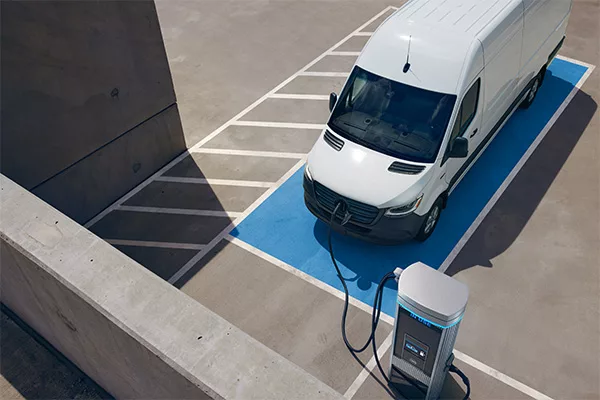The Mercedes eSprinter represents an electrifying leap into the future for cargo transportation. This vehicle stands out as a symbol of progress by embodying the essence of a traditional van, recharged with an electric heartbeat.
A Fresh Arrival in the US
Having made its debut across Europe, the eSprinter has now been revamped and introduced as the 2024 model in the United States. With upgrades eclipsing its predecessor, the latest variant is ready to hit the US market, providing consumers with an eco-friendly cargo transport solution.
Design and Variants Tailored for the US Market
While European offerings include diverse battery sizes and wheelbase options, the US will see the sizable long-wheelbase model powered by a robust 113kWh battery. Assembled in South Carolina, this iteration is crafted to accommodate the American landscape and consumer needs.
Powertrain Options for Versatile Performance
Different motor choices are available to ensure that the eSprinter can adeptly handle various terrains and payload demands, making it a versatile vehicle for a myriad of tasks within urban or more challenging environments.
Marching Towards an Electric Fleet
Mercedes is propelling towards a future where electric vans lead their fleet, with significant latent milestones set for 2026 and 2030. The ambition to electrify is clear, despite trailing behind the aggressive EV adoption rates set by California and the US EPA.
The Quest for Better Range and Efficiency
Under the WLTP test cycle, the eSprinter boasts impressive range capabilities, with real-world experiences suggesting practical mileage for daily operations. Its energy efficiency shows commendable improvements over earlier models, underpinning the progress in Mercedes’ EV technology.
Charging: Adaptability and Future Possibilities
Equipped with a durable LFP battery system, the eSprinter breaks the norm by allowing frequent full charges. It also presents a balanced charging infrastructure, favoring overnight AC charging and providing the option for relatively quick DC charges when necessary.
Blending Technology with Practicality
With extensive cargo space unaffected by the electric transition, the eSprinter excels in delivering goods without the weight constraints smaller EVs might face. On top of that, state-of-the-art driving aids and modern infotainment systems contribute to a safer and more efficient journey on the road.
A Digital Touch to Enhance Visibility
The innovative digital rear-view mirror is especially beneficial for a van devoid of rear windows, while other features such as MBUX offer intelligent navigation and over-the-air updates for a seamless user experience.
User Interface: Insights into Optimization
Tiny UI elements, reminiscent of its combustion-engine lineage, may hint at areas ripe for optimization. Such insights reflect an ongoing quest to refine and align every aspect of the vehicle with its electric nature.
Assessing Value: Costs, Savings, and Environmental Impact
The eSprinter commands a premium over its diesel counterpart, yet it presents a compelling value proposition through reduced operational costs and the potential for significant environmental benefits. Government incentives could further enhance its appeal from a financial standpoint.
Upfitters and the Road Ahead
Mercedes is set to collaborate with upfitting partners to mould the eSprinter based on customer preferences, with an eye on future first-party electric RV offerings that could arise from the upcoming VAN.EA platform.
In a nutshell, the Mercedes eSprinter ushers in a promising horizon for electric delivery vehicles while underlining the company’s staunch commitment to innovation and eco-friendly advancements in the transport industry.

























